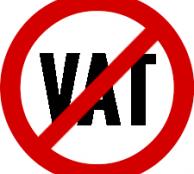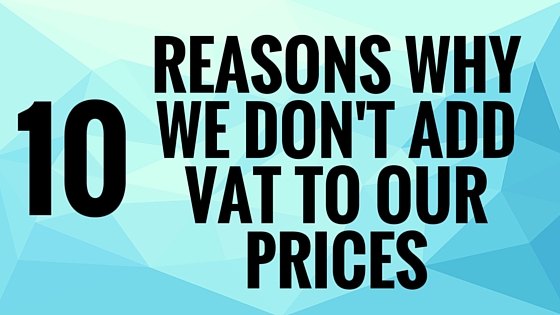
بسم الله والحمد لله والصلاة والسلام على رسول الله
Our popular Zakâh nisâb and mahr prices tool is based on the price of silver (and gold). We use the market prices (accepted and standardised throughout the world) for the price of silver.
In the UK (and the rest of the EU), gold is not subject to Value Added Tax (VAT), but silver is[1]. On this basis, some have argued that those values which are based on silver prices such as the Zakâh silver nisâb and mahr such as mahr al-azwâj (the dower of the wives of the Prophet صلى الله عليه وسلم) should also be subject to VAT. They take the market price and add VAT. This inflates the price which is why you may see different prices elsewhere. We firmly disagree with adding VAT.

Hereunder are a list of TEN reasons why we believe these prices should be kept VAT-free:
1. Legally possible to avoid
It is legally possible for private individuals to purchase silver without paying VAT. Certain countries such as Norway, Estonia and Singapore allow any individual to purchase silver without paying VAT[2]. There may well be other costs to pay, but we're only talking about VAT here - also see point 3. Additionally, to get remotely close to the market price, a private individual can appoint a broker/agent to store his precious metal in a vault. Any silver stored in this manner is NOT subject to VAT[3].
2. Illogical and inconsistent
If a regular customer attempts to purchase gold, it is not possible to purchase at the spot/market price - there will be other costs such as fees, profit margins, delivery, etc., yet the market price is being used to work out the gold nisâb, therefore arbitrarily adding VAT while ignoring other costs makes this addition illogical and inconsistent. If we can ignore other costs for gold, why not VAT for silver?
3. Other costs exceed VAT
If someone does want to take physical possession of silver, the profit margins and delivery costs exceed the VAT (especially at low volume), yet these are not even considered. If we are to add VAT, why not also add in these other costs for both metals?
For example, if silver is approx. £303.72/kg[4], one site (with relatively lower prices) has a 10g bar being sold at £21.04 whereas 10g should be sold at £3.04 (at market price)[4]. The VAT alone is £3.51 which exceeds the spot/market price! If buying in bulk, the price lowers. However, it still far exceeds the market price.
For comparison purposes, a 500g bar (which is still lower than the silver nisâb and the market price should be £151.86[4]) is sold at just under £200 which means that the VAT of approx £40 is still lower than the profit margin/costs even at that price/sale level.
4. Ambiguous
The VAT is a percentage (which varies), so the actual value will be dependent on the base value. If we're using the base value as the market price, that's incorrect as the VAT is calculated inclusive of all costs with the possible exception of delivery - see previous point. However, adding other costs would result in great inconsistencies and confusion as this would vary from supplier to supplier. This makes adding VAT completely unstandardised as we don't even know what the base cost is, therefore the actual VAT payable is completely ambiguous and unknown.
5. Impossible
Whenever VAT is added, it is never on the market value. As stated in points 3 and 4, it's on the full total cost, therefore it's impossible to ever purchase at a price of
market value + VAT
This makes this price (of market value + VAT) impossible for anyone to pay to ever buy silver.
6. Useless and inaccurate
Following on from the previous point, adding VAT to the market value results in a completely useless and inaccurate price that provides no benefit whatsoever.
7. Gold-to-silver ratio much greater than VAT
The ratio of gold to silver nisâb is currently over 10 (i.e. the gold nisâb is over 10 times greater than the silver one). For example, currently, the silver nisâb is £186.03 while the gold nisâb is £2009.06[4] - a ratio of 10.8:1. Despite this, the silver nisâb is used/chosen for the nisâb for Zakâh purposes (when a person possesses mixed assets) because it is more beneficial to the poor (the lower the nisâb, the more the poor will benefit). For more information on this, please see our Zakâh Calculator Guide.
When the gold nisâb which is an accepted and proven nisâb level can be rejected in favour of the silver nisâb on the principle of being "more beneficial to the poor" despite a gold-to-silver ratio of over 10, then adding VAT which is only an increase of 0.2 most definitely goes against this principle, especially when the VAT is not actually based on anything tangible.
8. At market price, there's no VAT
Those who do deal with market prices for both gold and silver most definitely do NOT pay VAT, so if we're talking about the actual market value prices, we should look at the values people are paying (i.e. they're not paying VAT on silver). Businesses don't pay VAT; consumers do.
9. True measure is market value
The true measure is the market value, not whether some tax may be applied unfairly on the whim of a government (and which can easily be legally circumvented by any individual - see point 1).
Let's not forget what we're aiming to find out here. We want to find out the true value of silver. Much of this discussion is theoretical as we're not actually purchasing silver. What we want to do is to find out how much it's worth. The only clear, unambiguous standard price is the market value.
10. VAT varies from country to country
We now support 15 currencies in our prices tool. Each country will have different VAT rates and legislation (including none) on the price of silver. Even within the EU, we have many different rates of VAT and, in some cases, even different rates for different types of silver[2]. Let's keep things simple: no VAT.
Conclusion
The above 10 reasons prove that it makes no sense to add VAT. Doing so is deeply flawed, both illogical and inconsistent, creates ambiguity, results in an impossible price which makes the new price incorrect, inaccurate and useless. The true standard and accepted measure is the actual market value/price which is the one that should be used to calculate the nisâb/mahr prices.
And Allâh knows best.
[1] https://en.wikipedia.org/wiki/Taxation_of_precious_metals
[2] https://en.wikipedia.org/wiki/Silver_as_an_investment#Taxation
[3] Note that this is simply a factual point ignoring any potential issues relating to Shari'ah-compliance.
[4] As of Friday, 18th December 2015
Category:

Add new comment